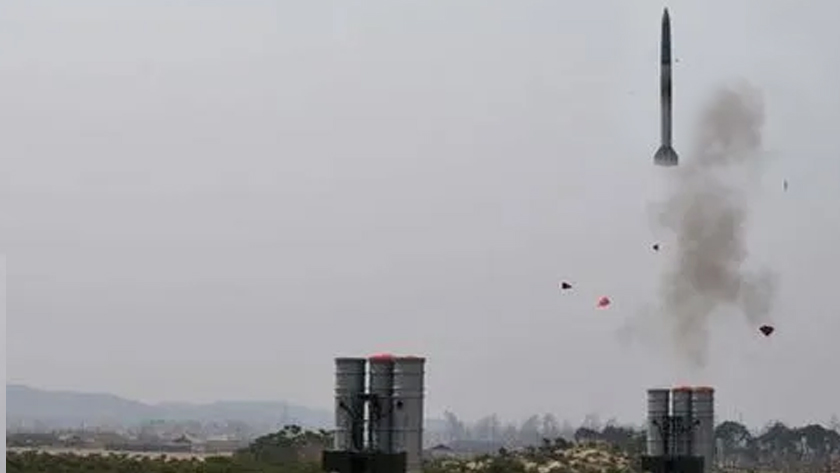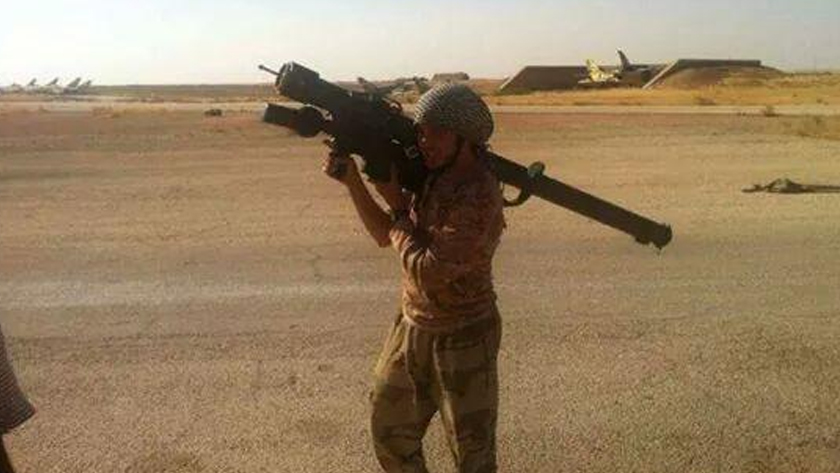Iran Press/ Asia: During the Cold War, the Korean People’s Army (KPA) Air Force, the official name of North Korea’s air force, engaged in combat with US naval and air force aircraft on multiple occasions.
Questions regarding North Korea’s ability to defend itself against modern fighters were highlighted by the first-ever exercises between fifth-generation fighters of South Korea and the United States from July 11-14.
The F-35 involved is one of just three fifth-generation fighters in production worldwide alongside the Chinese J-20 and Russian Su-57. The Russian jet is fielded in very limited numbers and still lacks many of the key technologies of its competitors, leaving the F-35 and J-20 effectively in a league of their own.
The US jet’s deployment by both the United States and South Korea represents a great challenge to North Korean defenses due to its ability to carry tactical nuclear warheads and its advanced stealth capabilities, sensor fusion, electronic warfare capabilities, and access to advanced beyond visual range weapons. Official statements from Pyongyang have strongly criticized the growth of the F-35 fleet in South Korea in particular.
To confront the fast-growing numbers of F-35s fielded against it, the KPA Air Force today still relies on the MiG-21 as one of its most capable fighters, albeit enhanced MiG-21BiS variants purchased through Kazakhstan, which are complemented by an estimated 60 MiG-23ML/Ps and 40 MiG-29 A/S/UBs.
The size of the MiG-29 fleet remains uncertain, as the aircraft were built in North Korea under license from the 1990s. The MiG-29s in KPA service are early fourth-generation variants, and although impressive in their flight performances are still technologically approximately three decades behind the F-35, with the disadvantage of older fighter classes being even greater.
With North Korea’s own fighter fleet seeing its standing relative to its adversaries decline by the year due largely to an inability to make foreign acquisitions, the KPA been forced to adopt asymmetric measures to tackle enemy air power.
Accordingly, from the late 2010s, North Korea began to field a range of new domestically developed weapons. These have largely focused on tackling assets such as F-35s without needing to engage them in air-to-air combat, as KPA MiG-21s did US fighters in the past. Instead, North Korea seeks to neutralize aircraft on the ground and take airfields out of commission.
The ability to asymmetrically counter the F-35 is expected to be increasingly highly prized as the nuclear-capable strike fighters come closer to becoming fully operational, and as they form a greater proportion of the US and allied fleets. Such capabilities are particularly vital as North Korea and the United States have remained officially at war for over 70 years, and as Washington has on multiple occasions, including in 2016 and 2017, come close to launching large-scale air assaults on its East Asian adversary.
Here are the four types of assets North Korea has fielded to counter American and allied air power, and the F-35 in particular.

Related News:
North Korea fires multiple artillery shots from rocket launchers
Rocket Artillery: The KN-25 and KN-09
Artillery has long played a key role in conflict on the Korean Peninsula, with the nature of the terrain and relatively confined distances between KPA forces and those of the US and South Korea allowing such assets to have a significant impact both tactically and strategically.

North Korea’s artillery forces are estimated to be among the largest in the world and, complementing the development of a range of tactical ballistic missiles, the capabilities of North Korean rocket artillery systems also improved significantly in the 2010s.
Perhaps the most notable example is the KN-09 system introduced around 2014, which boasted a world-leading range of 200 kilometers, according to the South Korean Defense Ministry.
That would allow the KN-09 to strike airbases and other targets across much of South Korea. The relatively small size of the Korean Peninsula and unprecedented ranges that modern rocket artillery systems can fire makes suppression of enemy air activities with artillery fire on bases a novel but potentially potent means of countering an advanced air power.
The capabilities of the KN-09 were surpassed by the longer-ranged KN-25 system first unveiled in 2019, which broke the KN-09’s record with a range of over 400 km.
Although more costly to fire than artillery guns, rocket artillery systems are considerably less costly than ballistic missiles and can lay down firepower in greater quantities, allowing for continued bombardment of key targets. With the KN-25 providing an unrivalled reach across much of South Korea, while its high mobility significantly increases survivability, the asset can potentially seriously complicate efforts to use airfields for fighter operations particularly for higher maintenance aircraft such as F-35s.
KN-23, KN-24 and Hwasong-8 Tactical Ballistic Missiles
North Korea from 2019 began to test a range of new ballistic missiles with capabilities decades in advance of previous models. According to a report from the US Congressional Research Service, these missiles have the potential to seriously complicate US military operations on the Korean Peninsula. The first to be unveiled, the KN-23, boasted an estimated 700 km range and closely resembled the Russian Iskander system, recently used extensively in Ukraine. It could similarly perform complex maneuvers and followed an irregular trajectory, which combined with its low hypersonic speed made it very difficult to intercept.

The shorter ranged KN-24, loosely resembling the US MGM-140, started testing months later and appeared to be a cheaper, shorter-ranged asset capable of laying down fire in greater volumes. Both missile systems use mobile launchers and have been seen deployed from tracked launch vehicles, allowing them to operate off roads including in forests and mountainous areas where they will be particularly difficult to locate.
A Congressional Research Service report referred to the KN-23 as an asset that “exemplifies the most notable advance” in the field of tactical weapons, with the missile observed conducting a complex “pull-up” maneuvers intended to confuse enemy air defense systems, while the KN-24 “demonstrates the guidance system and in-flight maneuverability to achieve precision strikes.”
A complementary longer-ranged tactical ballistic missile, the Hwasong-8, first flew in September 2021 and integrated a hypersonic glide vehicle, making it extremely difficult to intercept. With adversary air defense systems not expected to be capable of reliably shooting down such glide vehicles for the foreseeable future, the Hwasong-8 can potentially reliably neutralize airfields across Japan in a war’s opening stages, which would otherwise provide secondary basing options for fighter operations against North Korea.
Air Defense: Pyongae-5 and Enhanced Successor
The entry into service in 2017 of the Pyongae-5, otherwise referred to as the KN-06, provided a modern, mobile, and high-altitude long-range asset widely compared to the Russian S-300, albeit with smaller launch vehicles carrying fewer missiles.

Reliance on such systems mirrors Russia’s own approach to countering NATO and allied air forces, namely fielding air defense networks built around the S-400 to compensate for the relatively small size of its own fighter fleet.
The Pyongae-5 was surpassed in 2020 by a successor using larger launch vehicles and compared by some to the Russian S-400. A test of the system in October 2021 revealed the following results, according to state media: “The remarkable combat performance of the new-type anti-aircraft missile with features of rapid responsiveness and guidance accuracy of missile control system as well as the substantial increase in the distance of downing air targets has been verified.”
The test confirmed at least one of the system’s missiles benefitted from twin rudder control and a double impulse flight engine.
These assets are thought to be able to redeploy quickly and field up-to-date sensors and electronic warfare countermeasures, which could seriously complicate F-35 operations in or near North Korean airspace.
HT-16PGJ and Other MANPADS
The Korean People’s Army Ground Force is thought to deploy a higher density of man-portable air-defense systems (MANPADS) among its ground units than almost any other army in the world, with these heavily relied on to compensate for a lack of air power and counter the US military’s heavy emphasis on the same. These include both Soviet-built systems such as those from the Igla and Strela series (the former of which was credited with shooting down a Russian Su-34 strike fighter over Ukraine in early March 2022) as well as more modern domestic platforms such as the HT-16PGJ.

Without radar signatures and with low susceptibility to electronic warfare, when widely integrated with infantry and armor across the country, these handheld surface-to-air missiles can pose a serious threat at low and medium altitudes.
While fifth-generation fighters such as the F-35 have reduced head signatures, their improved survivability over fourth-generation jets is primarily against radar-guided weapons leading infrared guidance to be widely perceived as the ideal “stealth killer.”
The value of extensive use of handheld anti-aircraft weapons has perhaps best been demonstrated in the Russia-Ukraine War by the restrictions on the use of Russian air power imposed by Ukraine’s very widespread use of these assets.
214
Read More:
North Korea fires ballistic missiles eastward
N. Korea test-fires new tactical guided weapon
North Korea fires long-range ICBM missile
Mojtaba Darabi

